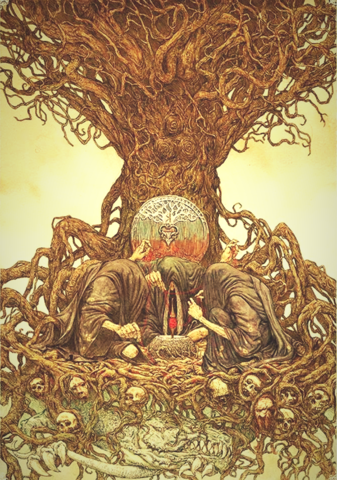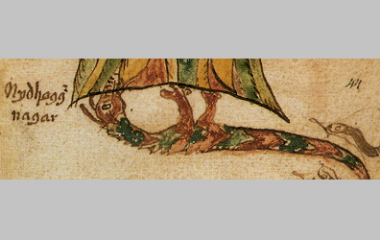

Hreidmar, although bereft at his son’s death, loved his new hoard.įafnir desired the gold so much that he killed his father for it. Some of the gold they used to cover the bag was red-gold, which was rare and highly valuable.
#Norse mythology nidhogg skin
Loki and Odin filled and covered the otter skin with the gold and unknowingly passed the cursed ring on to Hreidmar. But, unbeknownst to the two gods, Andvari placed a curse on the ring that it would destroy anyone who possessed it. With much grumbling, Andvari handed over his treasure. Apparently the dwarves in Norse mythology liked to transform into water creatures! Loki caught Andvari in Ran’s net.Īndvari possessed a treasure trove, so Loki demanded the gold in exchange for Andvari’s life. Loki knew the dwarf Andvari liked to swim there in the form of a pike fish. He borrowed a net from the sea goddess Ran, and then he and Odin traveled to a pool of water. Loki, of course, knew where to find the gold. Hreidmar demanded that the gods fill the skin with gold and then cover it with more gold so that no bit of the skin showed. The higher the status of the person killed, the more the compensation. In Norse culture, since there were no courts or prisons, people could appeal for monetary compensation for the killing of livestock, and even family members. Hreidmar, horrified, told them that the otter was his son Otr! He demanded compensation for his son’s killing. They showed him the otter as an offering for dinner. Later they came to a house and asked the owner, Hreidmar, if they could stay the night. Being hungry, Loki killed the otter for their meal. Odin and Loki were traveling when they came across an otter eating a fish. Regin tells the tale of how that happened. Sigurd, rightfully, asked Regin how he was the brother of a dragon. Regin told Sigurd about Fafnir the dragon who guarded a large hoard of treasure that Sigurd could claim after he killed the serpent. Sigurd testing his new sword, Garm, reforged by the dwarf smith Regin. The blacksmith in Sigurd’s stepfather’s household was a dwarf named Regin, who told Sigurd that he needed to make a name for himself by doing a great deed…like slaying a dragon. But Sigurd never forgot his lineage as someone who came from a great line of noble men.

Like many heroes, Sigurd’s father was killed when Sigurd was a child, and he lived with a step-father. We learn about the story of Fafnir in the Saga of the Volsungs, and it includes the Norse hero, Sigurd. Born the dwarf son of a magician, Fafnir became so consumed by greed that he transformed into a dragon so he could guard his hoard. Fafnirįafnir has the most remarkable story of the three, because he was not born a dragon–he turned into one. There are three main dragons in Norse myths: Fafnir, Nidhogg (Nith-hog), and Jormungandr (Your-mun-gahn-der). However, their size and ferocity should be very familiar! Most of them slithered more like giant snakes rather than flying through the air like our modern dragons. Their dragons were typically more like giant serpents than what we think of as dragons, with only one of them sporting wings, Nidhogg, who also had feathers. Tolkien derived the inspiration for his creature, Smaug, from one of the Norse world’s most well-known stories, the Saga of the Volsungs.ĭragons in Norse mythology are referred to as “ormr” which is the same as the English word “worm”. It should come as no surprise that people in the Viking world had stories of dragons. We are all familiar with dragons, those Western symbols of power, wealth, and greed.


 0 kommentar(er)
0 kommentar(er)
